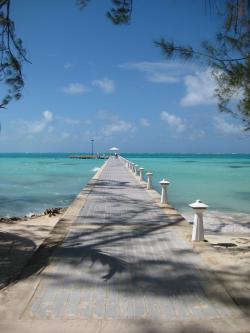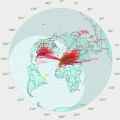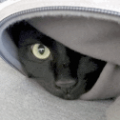jks
About
- Username
- jks
- Joined
- Visits
- 36,263
- Last Active
- Roles
- Member, Administrator, Moderator
- Points
- 640
Reactions
-
v1.360+: DRM extension now available
You won't get audio unless the signal is good enough that the "Main service channel" (MSC) block goes green. If the broadcaster is using 64-QAM for MSC (and to a lesser extent 16-QAM for SDC) then the signal will be less robust against selective fading, multi path etc. This is a trade-off to allow a higher bitrate (e.g. "20.96 kbps" as shown above) which allows better codec performance and stereo vs mono etc. There are other factors too that I'm only beginning to understand. -
v1.360+: DRM extension now available
The elves have delivered. In time for Xmax / Boxing Day (depending on your timezone) v1.360/61 contains a DRM Beta test.
This will be a long update as a new compiler is installed and the DRM code takes 10 times longer to compile than the rest of the Kiwi code. The DRM compiled code is cached so future updates won't take as long.
There are many bugs and limitations currently:- Use of the DRM extension on stock Kiwis using the BeagleBone Green/Black is limited to a single channel. DRM won't start unless there is no other activity. All other activity is excluded while DRM is running. Kiwis using a BeagleBone AI can run 4 DRMs simultaneously (but watch your CPU temperature!)
- If you don't want DRM available on your public Kiwi because of the above exclusions then disable it in the admin "extensions" tab. DRM entry, "User enabled?" switch. But consider leaving it enabled as we need geographically dispersed DRM Kiwis for testing.
- DRM doesn't currently work on Kiwis configured for 20 kHz channels.
- The stations in the India MW menu won't play because Dream xHE_AAC codec development is not finished.
- The frequencies in the menus are currently static and DRM frequencies are known to change. We are working on a scheme to dynamically update them.
- Exactly why some signals "drop-out", even though they are relatively strong, is an interesting topic. We hope to write about this at some point. It has to do with selective fading and the DRM transmission options selected by the broadcaster (e.g. QAM options, coding rates, protection levels).
- Use of the DRM extension on stock Kiwis using the BeagleBone Green/Black is limited to a single channel. DRM won't start unless there is no other activity. All other activity is excluded while DRM is running. Kiwis using a BeagleBone AI can run 4 DRMs simultaneously (but watch your CPU temperature!)
-
v1.360+: DRM extension now available
The elves have delivered. In time for Xmax / Boxing Day (depending on your timezone) v1.360/61 contains a DRM Beta test.
This will be a long update as a new compiler is installed and the DRM code takes 10 times longer to compile than the rest of the Kiwi code. The DRM compiled code is cached so future updates won't take as long.
There are many bugs and limitations currently:- Use of the DRM extension on stock Kiwis using the BeagleBone Green/Black is limited to a single channel. DRM won't start unless there is no other activity. All other activity is excluded while DRM is running. Kiwis using a BeagleBone AI can run 4 DRMs simultaneously (but watch your CPU temperature!)
- If you don't want DRM available on your public Kiwi because of the above exclusions then disable it in the admin "extensions" tab. DRM entry, "User enabled?" switch. But consider leaving it enabled as we need geographically dispersed DRM Kiwis for testing.
- DRM doesn't currently work on Kiwis configured for 20 kHz channels.
- The stations in the India MW menu won't play because Dream xHE_AAC codec development is not finished.
- The frequencies in the menus are currently static and DRM frequencies are known to change. We are working on a scheme to dynamically update them.
- Exactly why some signals "drop-out", even though they are relatively strong, is an interesting topic. We hope to write about this at some point. It has to do with selective fading and the DRM transmission options selected by the broadcaster (e.g. QAM options, coding rates, protection levels).
- Use of the DRM extension on stock Kiwis using the BeagleBone Green/Black is limited to a single channel. DRM won't start unless there is no other activity. All other activity is excluded while DRM is running. Kiwis using a BeagleBone AI can run 4 DRMs simultaneously (but watch your CPU temperature!)
-
v1.360+: DRM extension now available
Progress with the DRM extension continues.
I recently found a simple bug in Dream with the interface code to the FDK codec that prevented mono services from producing audio (e.g. the two-channel All India Radio 7550 kHz). But it took a long time to find. The problem doesn't exist with the older FAAD2 codec, but it has other problems. FDK seems to require less cpu resources so naturally I want to use it.
The DRM waveform is really interesting. If you zoom in with the Kiwi waterfall you'll notice three apparent "dead" carriers on the right-hand side of the passband. To explain: Mode B DRM OFDM modulation consists of 206 carriers spaced every 46.875 Hz across the (almost) 10 kHz wide DRM signal. You can sort of see them when you zoom in. The image below is RFI at 3965 kHz. You can see that central carrier is missing. The unmodulated carriers are at 16, 48 and 64 carrier positions away from the center. These turn out to be intentional unmodulated "frequency pilots" used by the software to do correction for receiver mistuning. The diagonal "ripples" in the waveform is (frequency) selective fading seen on virtually every other HF signal.
https://en.wikipedia.org/wiki/Digital_Radio_Mondiale
https://www.drm.org/wp-content/uploads/2019/02/DRM-Handbook.pdf
-
v1.360+: DRM extension now available
Progress with the DRM extension continues.
I recently found a simple bug in Dream with the interface code to the FDK codec that prevented mono services from producing audio (e.g. the two-channel All India Radio 7550 kHz). But it took a long time to find. The problem doesn't exist with the older FAAD2 codec, but it has other problems. FDK seems to require less cpu resources so naturally I want to use it.
The DRM waveform is really interesting. If you zoom in with the Kiwi waterfall you'll notice three apparent "dead" carriers on the right-hand side of the passband. To explain: Mode B DRM OFDM modulation consists of 206 carriers spaced every 46.875 Hz across the (almost) 10 kHz wide DRM signal. You can sort of see them when you zoom in. The image below is RFI at 3965 kHz. You can see that central carrier is missing. The unmodulated carriers are at 16, 48 and 64 carrier positions away from the center. These turn out to be intentional unmodulated "frequency pilots" used by the software to do correction for receiver mistuning. The diagonal "ripples" in the waveform is (frequency) selective fading seen on virtually every other HF signal.
https://en.wikipedia.org/wiki/Digital_Radio_Mondiale
https://www.drm.org/wp-content/uploads/2019/02/DRM-Handbook.pdf








